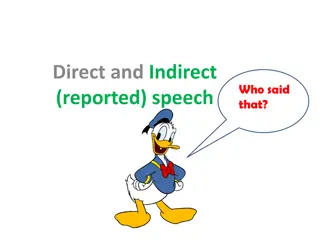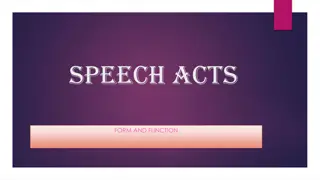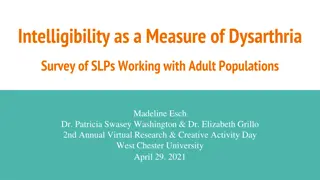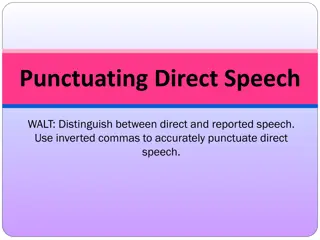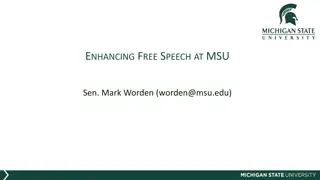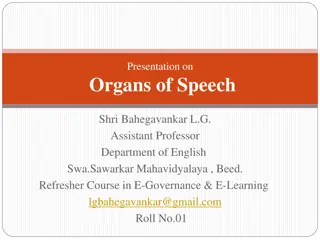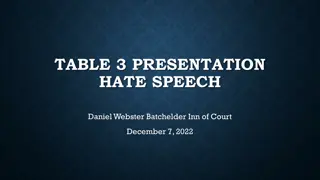Building Strong Speech Support
Utilize various support strategies to enhance the credibility, clarity, and vividness of your speeches. Learn how to evaluate support options, use statistics effectively, incorporate narratives, testimonies, analogies, and more to strengthen your arguments and engage your audience.
Download Presentation

Please find below an Image/Link to download the presentation.
The content on the website is provided AS IS for your information and personal use only. It may not be sold, licensed, or shared on other websites without obtaining consent from the author.If you encounter any issues during the download, it is possible that the publisher has removed the file from their server.
You are allowed to download the files provided on this website for personal or commercial use, subject to the condition that they are used lawfully. All files are the property of their respective owners.
The content on the website is provided AS IS for your information and personal use only. It may not be sold, licensed, or shared on other websites without obtaining consent from the author.
E N D
Presentation Transcript
Chapter 7 Supporting and Building Arguments
Learning Objectives ? Define the term support and describe 3 reasons we use support in speeches. ? Explain four criteria used to evaluate support options. ? Describe how speakers can use statistics to support their speeches. ? Differentiate among the 4 types of definitions and among the 4 types of examples. ? Explain how narratives can be used to support informative, persuasive, and entertaining speeches. ? Differentiate between the two forms of testimony and between the two types of analogies. ? Distinguish between useful and unreliable forms of support. ? Describe the 5 ways support is used within a speech. ? Describe the purpose of a reverse outline. ? Explain why it is important to use support for every claim made within a speech. ? Evaluate the 3-step process for using support within a speech.
Using Research as Support In public speaking, the word support refers to a range of strategies used to develop the central idea and specific purpose by providing corroborating evidence. Why We Use Support? Support is the foundation that a speech stands on. It also helps clarify content, increase speaker credibility, and make the speech more vivid.
Using Support to Clarify Content Speakers often choose a piece of support because a previous writer or speaker has phrased something in a way that evokes a clear mental picture of the point they want to make. Example: You re preparing a speech about hazing in college fraternities. You read your school s code of student conduct to find out how your campus defines hazing. You could use this definition to make sure your audience understands what hazing is and what types of behaviors your campus identifies as hazing.
Using Support to Add Credibility The less an audience perceives you as an expert on a given topic, the more important it is to use a range of support from authoritative sources. Using credible support lets the audience know that you have done your homework. It is important to evaluate your support to ensure that it will not detract from your credibility as a speaker. Inadequate support or support from questionable sources diminishes your credibility as a speaker, as does distorting the intent of a source to try to force it to support a point.
Using Support to Add Vividness Vividness refers to a speaker s ability to present information in a striking, exciting manner. The goal of vividness is to make your speech more memorable. Example: In a speech about the importance of wearing seat belts when in a motor vehicle, a student offered the following illustration about their efficacy in preventing serious injury or death: the impact from hitting a windshield at just twenty miles per hour without a seat belt would be equivalent to falling out of the window of their second-floor classroom and landing face-first on the pavement below. Because the students hearing the speech were in that second-floor classroom several times each week, they could easily visualize the speaker s analogy.
Types of Support: Facts and Statistics A fact is a truth that is arrived at through the scientific process. Many of the facts that speakers cite are based on statistics. Statistics is the mathematical subfield that gathers, analyzes, and makes inferences about collected data. Statistics are probably the most used and misused form of support in any type of speaking. People like numbers. People are impressed by numbers. Some places where you can easily locate useful statistical information related to your topic include Bureau of Labor Statistics Bureau of Justice Statistics US Census Bureau National Center for Health Statistics Sense About Science Stats Check Roper Center for Public Opinion Neilson Gallop Adherents Pew Research Center
Statistics Beware! Many speakers either do not know how to interpret statistics or deliberately misuse them to mislead their audience. Do these three things to avoid misusing statistics in public speaking: Be honest with yourself and your audience. Do not distort or leave out a statistic that contradicts your point. Run a few basic calculations to see if a statistic is believable. A source may contain a mistake for example, a decimal point may be in the wrong place or a verbal expression like increased by 50 percent may conflict with data showing an increase of 100 percent. Evaluate sources using the CRAAP method discussed in Chapter 6.
Definitions Definitions help speakers communicate a word or idea in a manner that their audiences will understand. Definitions are important to provide clarity for your audience. Effective speakers strike a balance between using definitions where they are needed to increase audience understanding and leaving out definitions of terms that the audience is likely to know. There are four types of definitions: ? lexical, ? persuasive, ? stipulative, ? and theoretical.
Lexical Definitions A lexical definition is one that specifically states how a word is used within a specific language, or in other words, a word s dictionary definition. Lexical definitions are useful when a word may be unfamiliar to an audience and you want to ensure that they have a basic understanding of the word. However, our ability to understand lexical definitions often hinges on our knowledge of other words that are used in the definition, so it is usually a good idea to follow a lexical definition with a clear explanation of what it means in your own words.
Persuasive Definitions Persuasive definitions are designed to motivate an audience to think in a specific manner about the word or term. Political figures are often very good at defining terms in a way that are persuasive. Estate tax Death tax Global warming Climate change Oil drilling energy exploration
Stipulative Definitions A stipulative definition is assigned to a word or term by the person or group who invents it. Examples: Jeggings, leggings that are made to look like skin-tight jeans, is a registered trademark of the Sanko Group, a textile manufacturer and distributor and the world s largest producer of denim. In the 2010 United States Supreme Court Ruling Citizens United v. Federal Election Commission, the Court defined corporations as people who have the right to political speech.
Theoretical Definitions Theoretical definitions are used to describe all parts related to a particular type of idea or object. Theoretical definitions are frequently ambiguous and difficult to fully comprehend. For example, if you attempted to define the word peace in a manner that could be used to describe all aspects of peace, then you would be using a theoretical definition. These definitions are considered theoretical because the definitions attempt to create an all-encompassing theory of the word itself.
Types of Support: Examples An example is a specific situation, problem, or story designed to help illustrate a principle, method, or phenomenon. Examples are useful because they can help make an abstract idea more concrete for an audience by providing a specific case. There are four types of examples Positive Examples Negative Examples Nonexamples Best Examples
Positive Examples A positive example is used to clarify or clearly illustrate a principle, method, or phenomenon in order to show a desirable solution, decision, or course of action. For example: a speaker discussing crisis management could talk about how a local politician handled herself when a local newspaper reported that her husband was having an affair or give an example of a professional baseball player who immediately came clean about his steroid use. These examples would provide a positive model for how a corporation in the first instance, and an individual in the second instance, should behave in crisis management.
Negative Examples Negative examples illustrate what not to do. For example, the same crisis management speaker could discuss the lack of communication from Union Carbide during the 1984 tragedy in Bhopal, India, or the many problems with how the US government responded to Hurricane Katrina in 2005. The purpose of a negative example is to show an undesirable solution, decision, or course of action.
Nonexamples A nonexample explains what something is not. For example, a crisis management speaker might mention a press release for a new Adobe Acrobat software upgrade as an example of corporate communication that is not crisis management. The press release nonexample helps the audience differentiate between crisis management and other forms of corporate communication.
Best Examples A best example is a model of the best way someone should behave within a specific context. While positive examples show appropriate ways to behave, best examples illustrate the best way to behave in a specific context. For example, a crisis management speaker could show a clip of a CEO speaking effectively during a press conference to model appropriate verbal and non-verbal behaviors when dealing with a crisis.
What to Consider When Using Examples While examples can be very effective at helping an audience to understand abstract or unfamiliar concepts, some audience members may dismiss them as unusual cases that do not represent what happens most of the time. For example, some opponents of wearing seat belts claim that not wearing your seat belt can save you from becoming trapped in your car if it catches on fire. Even if a speaker has a specific example of an accident where this was true, many audience members would see this example as a rare case and thus not view it as strong support. An effective speaker must consider how the audience will respond to the example and how the example fits with what else the audience knows, as discussed under the heading of accuracy earlier in this chapter.
Types of Support: Narratives Narratives are stories that help an audience understand the speaker s message. They are like examples, except narratives are generally longer and take on the form of a story with a clear arc (beginning, middle, and end). Narratives are a fundamental part of public speaking that can be used for support in all three general purposes of speaking: informative, persuasive, and entertaining. Also, people like stories because we are innately storytelling animals (Fisher, 1987). But remember your ethical responsibilities when using narratives for support: Clearly identify whether the narrative you are sharing is real or hypothetical. If you are sharing a real story, clarify whether or not it is yours: an account of an event where you were actually present, or someone else s that you heard second hand.
Informative Narratives Informative narratives provide information or explanations about a speaker s topic. They can help audiences understand nature and natural phenomena. For example, while many people may not know all the mathematics behind gravity, most of us have grown up with the story of how Sir Isaac Newton developed the theory of gravity after he was sitting under a tree and hit on the head by a falling apple. Even if the story is not precisely accurate, it serves as a way to help people grasp the basic concept of gravity.
Persuasive Narratives Persuasive narratives are stories used to persuade people to accept or reject a specific attitude, value, belief, or behavior. For example, fairy tales, parables or fables are designed to teach people basic lessons about life. Aesop s fable The Farmer and the Snake warns people that that just because they help someone in need doesn t mean the other person will respond in kind ( The Farmer and the Snake ). The fairy tale Peter and the Wolf teaches children that if they tell lies, people won t believe them when they are telling the truth. Peter falsely cries wolf so many times that on the day that he is being menaced by an actual wolf, no one in the village responds to his cries for help because they believe that the boy is just playing another of his pranks.
Entertaining Narratives Entertaining narratives are stories designed purely to delight an audience and transport them from their daily concerns. Some professional speakers make a very good career by telling their own stories of success or how they overcame life s adversities. Comedians such as Jeff Foxworthy tell stories that are ostensibly about their own lives in a manner designed to make the audience laugh. While entertaining narratives may be a lot of fun, people should use them sparingly as support for a more serious topic or for a traditional informative or persuasive speech.
Types of Support: Testimony Testimony refers to expert opinion (expert testimony) or direct accounts of witnesses (eyewitness testimony) that can be used to provide support for your speech. Expert Testimony Expert testimony is given by someone who is a recognized authority on the topic. Example: Someone giving a speech about why physical education should be mandatory for all grades K 12 in public schools might quote The Surgeon General s Vision for a Fit and Healthy Nation written by U. S. Surgeon General Regina Benjamin s strategies for combating the problem of childhood obesity within the United States. Her expertise in this area gives credibility to the speaker s claims.
Eyewitness Testimony Eyewitness testimony is given by someone who was present at an event. Example: A student giving a speech about giving a speech on the effects of the 2010 Deepwater Horizon disaster in the Gulf of Mexico might include testimony from one of her friends who was on a flight that passed over the Gulf of Mexico when the pilot pointed out the platform to passengers. However, understand the limitations of eyewitness testimony as supporting evidence. Someone s firsthand account of the event may not always be reliable. Always evaluate the credibility of your witness and the recency of the testimony. Consider how you received the testimony. Did you ask the person for the testimony, or did he or she give you the information without being asked? Does the witness have anything to gain from his or her testimony that might make the account biased? How much time has passed between the event and when the eyewitness recalls what happened. Testimony given soon after the event provides immediate impressions based on the witness subjective experience.
Types of Support: Analogies An analogy is a figure of speech that compares two ideas or objects, showing how they are similar in some way. Analogies, for public speaking purposes, can also be based in logic. The logical notion of analogies starts with the idea that two ideas or objects are similar, and because of this similarity, the two ideas or objects must be similar in other ways as well. Two types of analogies: Figurative Literal
Figurative Analogies Figurative analogies compare two ideas or objects from two different classes. A class is a group that has common attributes, characteristics, qualities, or traits. Example: Compare a new airplane to an eagle. Both have the ability to fly, but airplanes are made by humans, while eagles exist in nature. While figurative analogies help a listener create a vivid mental picture, they do not help a listener determine the validity of the information being presented. Also, figurative analogies are innately problematic because people often immediately dismiss them as far-fetched if the two things being compared aren t sufficiently similar. Example: During the Covid-19 pandemic, some people compared having to abide by city and state masking requirements as like living in Nazi Germany. In fact, having to abide by state and city masking requirements is not like living through the Holocaust.
Literal Analogies Literal analogies compare two objects or ideas that clearly belong to the same class. Because your goal is to show that the two objects or ideas are similar, your argument should contain more similarities to reinforce your original analogy. Example: A speech about an investment opportunity with a new fast-food brand might compare the franchise to existing fast-food companies like Taco Bell, Subway, and McDonalds. Showing that the new start-up brand functions similarly to other brands suggests that the new brand will also have the same kind of success. When using literal analogies, make sure that the ideas are closely related. You are asking your audience to confirm the logic of your comparison, so if they don t see the comparison as valid, it won t help to support your message.
Using Support and Creating Arguments Although the research process is designed to help you find effective support, you still need to think through how you will use the support you have accumulated. Supporting one s ideas with a range of facts and statistics, definitions, examples, narratives, testimony, and analogies can make the difference between a boring speech your audience will soon forget and one that has a lasting effect on their lives.
Understanding Arguments In the context of speech, an argument consists of a thesis based on supporting premises and conclusions. An arguable thesis is not a statement of fact, although it should be supported by facts as well as reliable interpretations of facts. A fact is a statement that can have either a yes or no answer, while an arguable proposition can have a range of responses that include yes and no. Arguments are based on claims, evidence, and warrants. A claim is a statement that is supported with evidence, A warrant is the inference that can be drawn from the claim and evidence. Unlike the claim and evidence, the warrant is usually inferred rather than stated: the speaker depends on the audience to use the claim and evidence to draw a conclusion (the warrant).
Claims, Evidence, and Warrant Example Claim: Life without a car in Baton Rouge is difficult and dangerous. Evidence: Baton Rouge lacks pedestrian-friendly infrastructure such as sidewalks in all neighborhoods and crosswalks for crossing busy streets. Warrant: It s difficult and even dangerous to walk in Baton Rouge. Evidence: The bus system is unreliable, and many bus stops aren t even covered. Warrant: Because public transportation is unreliable and inconvenient, most people need to have a car to live in Baton Rouge. The claim above is supported by two pieces of evidence that lead the audience to draw a conclusion about the ways that being car-less in Baton Rouge is difficult and dangerous.
Claims with Insufficient Supporting Evidence for a Warrant Some claim and evidence couplings ask the audience to draw conclusions (warrants) based on insufficient or unrelated evidence. Examine the claims that follow to determine if the writer has supplied enough evidence for the audience to reach the warrant below. 1. LSU should receive free tickets to all LSU home football games because we would have no football team without the university. Warrant: Being enrolled at LSU is enough reason for students to receive this expensive commodity. Given the value of LSU football tickets, is the Athletic Department s dependence on the university to exist enough reason that all LSU students should receive tickets to home games? While you can t have a university (or a college football team) without students, is this sufficient justification to give every student what amounts to over $1,000 in free tickets every semester, or do we need more reasons for support?
Claims with Insufficient Supporting Evidence for a Warrant 2. Baton Rouge is a dangerous place to live. According to FBI statistics, Baton Rouge had the 6th highest murder rate in the United States in 2019. Warrant: The FBI statistics on murder rates are sufficient for determining whether or not a place is dangerous. Or FBI statistics from 2019 about the murder rate in Baton Rouge are an accurate predicter of how safe someone is in this city in the present day. #2: What is meant by dangerous place to live ? Is one set of FBI statistics sufficient to make such a sweeping judgment about how safe Baton Rouge is? Do we need other types of statistics and facts?
Claims with Insufficient Supporting Evidence for a Warrant 3. This year the United States will likely be hit by several powerful hurricanes. A team of scientists led by Dr. Phil Klotzbach at Colorado State University says that there is about a 65% chance of above-average tropical storm activity. Warrant: A team of scientists led by Dr. Phil Klotzbach at Colorado State University can make accurate predictions about tropical storm activity in a given year. #3: What are Dr. Phil Klotzbach s credentials? What does someone in Colorado know about hurricanes? How do we know that Dr. Klotzbach and his team of scientists have the expertise to make such predictions?
Claims, Evidence, and Warrants as the Foundation of Your Argument Creating strong arguments is a fundamental part of public speaking. Remember that your argument is only as strong as your weakest claim. Examining your claims in this way will help determine what level of support you need for each.
Sifting Through Your Support When researching a topic, you re going to find a range of different types of supporting evidence. Sooner or later, you are going to have to make some decisions as to which pieces of support you will use and which you won t. While there is no one way to select your support, here are some helpful suggestions.
Use a Variety of Support Types Nothing will kill a speech faster than if you use the same type of support repeatedly. Also, you will need to find the Goldilocks zone for how much support you will need. Use as much as you need to make your point without going overboard, or the amount that s just right. Audience members are likely to have different preferences for support; some may like statistics while others really find narratives compelling. By using a variety of forms of support, you are likely to appeal to a broader range of audience members and thus effectively adapt to your audience. Even if your audience members prefer a specific form of support, providing multiple types of support is important to keep them interested.
Choose Appropriate Forms of Support Consider your speech s context and audience to determine what forms of support are the most effective and accepted. While speeches using precise lexical definitions may be useful for the courtroom, they may not be useful in an after-dinner speech to entertain. At the same time, entertaining narratives may be great for a speech whose general purpose is to entertain but may decrease a speaker s credibility when attempting to persuade an audience about a serious topic.
Check for Relevance Each piece of evidence you select needs to support the specific purpose of your speech. Example: If a really cool quotation doesn t support your core argument in your speech, leave it out. You will lose credibility with your audience if you use irrelevant support sources. Consider your audience. Example: If you are giving a speech to an audience of twenty-year olds, would it be useful to ask them to remember what they were doing on 9/11? Chances are that they weren t even born then.
Dont Go Overboard Don t use so many forms of support that it interferes with your speech. Example: You find three different sources that support your speech s purpose in the same way. Instead of using all three, pick the form of support that would be most relatable to your audience and your topic. Remember, the goal is to support your speech, not to have the support become your speech.
Dont Manipulate Your Support and Cite Your Sources in Your Speech Manipulating your support to make it say what you want it to say in spite overwhelming evidence to the contrary is unethical and disrespectful to your audience. Use these guidelines to make sure that you aren t manipulating your support: Don t overlook significant factors or individuals related to your topic. ? Don t jump to conclusions that are not justified based on the supporting evidence you have. Do not use evidence to support faulty logic. Do not use out-of-date evidence that is no longer valid. Do not use evidence out of its original context. ? Do not knowingly use evidence from a source that is clearly biased. Also, clearly cite all your supporting evidence within your speech. ? ? ? ?
Using Support within Your Speech First, determine whether you will directly quote, paraphrase, or summarize your supporting evidence used in your speech, or use visual aids or numerical data. Direct Quotations A direct quotation uses the exact wording of another speaker or writer within the speech. Use direct quotations as little as possible in your speech. Overuse of direct quotations can confuse your audience because the speaker must frequently transition from her words to the exact words of someone else. Use direct quotations only if the original author s words are witty, engaging, distinct, or particularly vivid. you want to highlight a specific expert and his or her expertise within your speech, or you are going to specifically analyze the exact wording of something.
Paraphrases Paraphrase and summarize sources whenever possible. Paraphrases reword a passage from the source in the speaker s words and are approximately the same length as the original. However, your paraphrase must be more than just dropping a few words from the direct quotation or rearranging them. Write an effective paraphrase by putting the original aside and restating it in your own words. Then, compare your paraphrase to the original for clarity. Paraphrase when you can say it more concisely than the original speaker or author, the exact wording is overly complex for your audience to understand, or you want to adapt an example, analogy, or narrative by another author to make its relevance to your own argument more evident. Also, paraphrase information that is not likely to be questioned by your audience. If you think your audience may question your support, then relying on a direct quotation may be more effective.
Summaries Summaries condense a longer text in your own words in just a few sentences. Summaries are helpful when you want to provide your audience with the overall idea of the original author s entire work. Summarize when you need another author s entire idea to understand the argument within your speech, when explaining possible counterarguments to the one posed within your speech, or when you need to cite a number of different sources effectively and efficiently to support a specific argument.
Numerical Data Use numerical data to cite statistics, but make sure that your audience can accurately interpret the numbers in the same way you are doing. To incorporate numerical data in your speech, clearly state the numbers used and where they came from and explain what the numbers mean and how you think they should be interpreted. If the numbers are overly complicated or if you use a variety of numbers within a speech, consider making a graph or pie chart or other visual aid to enhance your audience s understanding of the numerical support.
Visual Aids Visual aids are any drawn or visual representation of an object or process. Examples: For a speech about how to swing a golf club, you could Bring in a golf club and give a live demonstration of how to swing it, show a diagram illustrating the steps for an effective golf swing, or play a short YouTube video that demonstrates how to swing a golf club. Use visual aids when a visual reference is shorter and easier for your audience to understand than explaining an object or process, or you really want to emphasize the importance of the support. Audiences recall information more readily when they both see and hear it than if they see or hear the information.
Visual Aids Best Practices Visual aids should be easy to understand and using them should take less time than using words alone. Make sure everyone in your audience can easily see your visual aids, not just those in front. If listeners cannot see the visual aid, then it will not help them understand how it is supposed to help your speech s specific purpose.
Is Your Support Adequate? Determine whether or not you have enough support for your speech by making a reverse outline, then using the outline to examine each individual claim in your argument to make sure that it is supported with evidence. Reverse Outline Make an outline of your speech beginning with the conclusion then working your way backward to show how you get to the conclusion. By forcing yourself to think about logic in reverse, you re more likely to find missteps along the way. Check to See That Each Claim Is Supported Locate each claim in your reverse outline and make sure that each is supported with sufficient evidence.
Incorporating Support into Your Oral Presentation Incorporate support into your speech using this three-step process: setup, execution, and analysis. 1. Setup Introduce your support with a sentence or phrase that indicates the origin of the information you will be using. Depending on the source of your support, all the following information presented in the order listed below could be useful: 1. The author s name and expertise on the subject matter (if appropriate). Some sources are written by authors who are not experts, so you really don t need to explain their expertise. In other cases, your audience will already know why the source is an expert, so you will not need to explain the author s credentials. 2. The source s title 3. The source s publication date 4. The source s container (if it comes from a larger work).
Incorporating Sources into Your Oral Presentation 2. Execution Executing your support involves reading a quotation, paraphrasing a speaker or author s words, summarizing a speaker or author s ideas, providing data, or using other visual aids. Effective execution should seamlessly flow into the context of your speech. While you want your evidence to make an impact, you also don t want it to seem overly disjointed. One mistake that some novice public speakers make is that when they start providing evidence, their whole performance changes and the use of evidence looks and sounds awkward. Practice the execution of your evidence when you rehearse your speech.
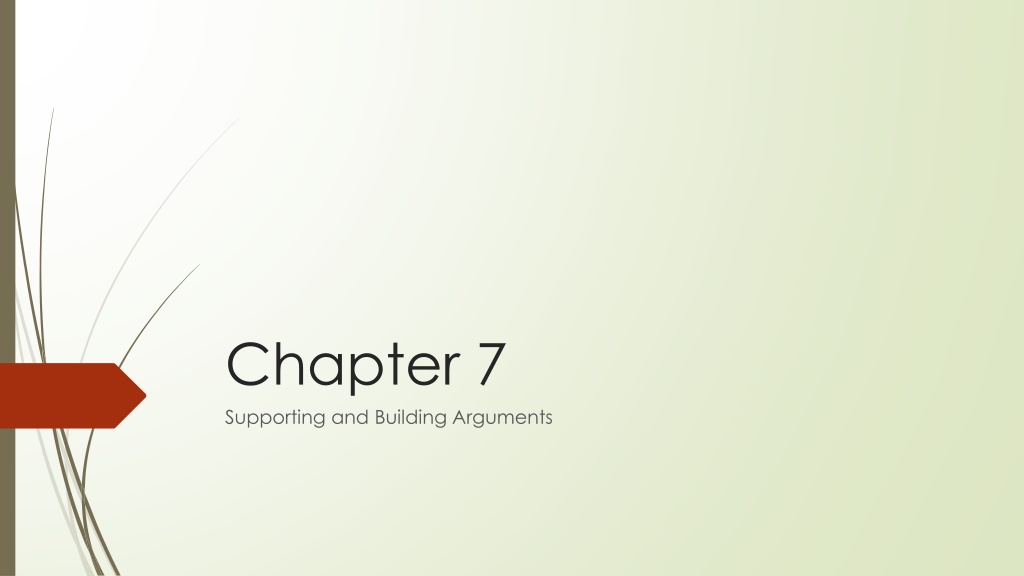








![Prevention and Combating of Hate Crimes and Hate Speech Bill [B.9B.2018]](/thumb/60513/prevention-and-combating-of-hate-crimes-and-hate-speech-bill-b-9b-2018.jpg)





